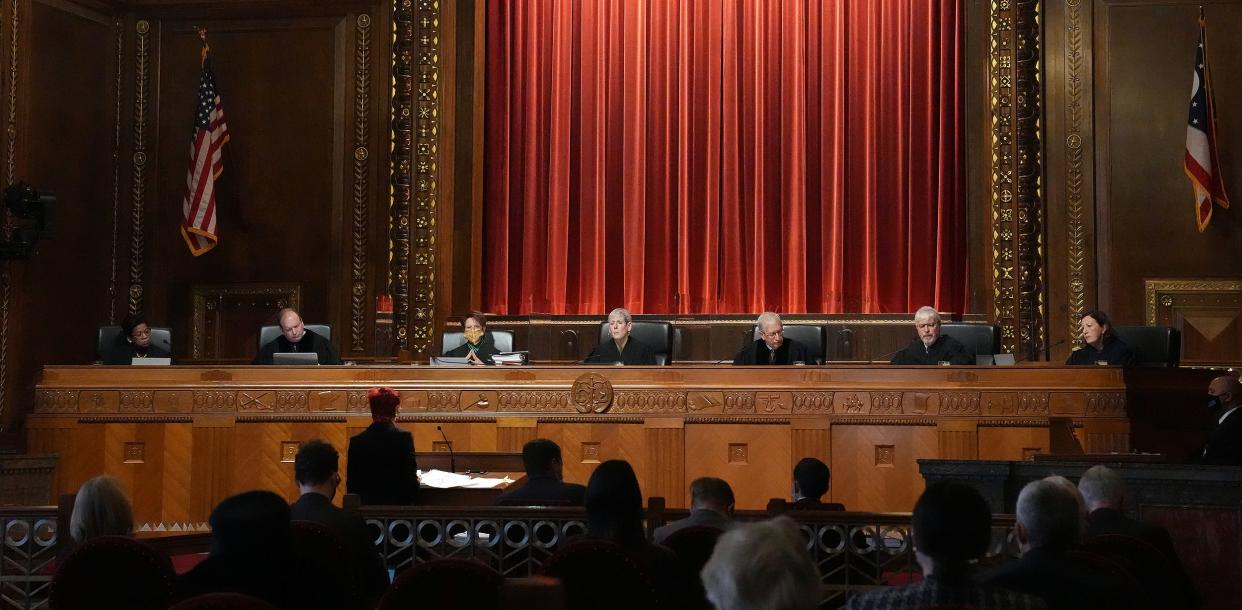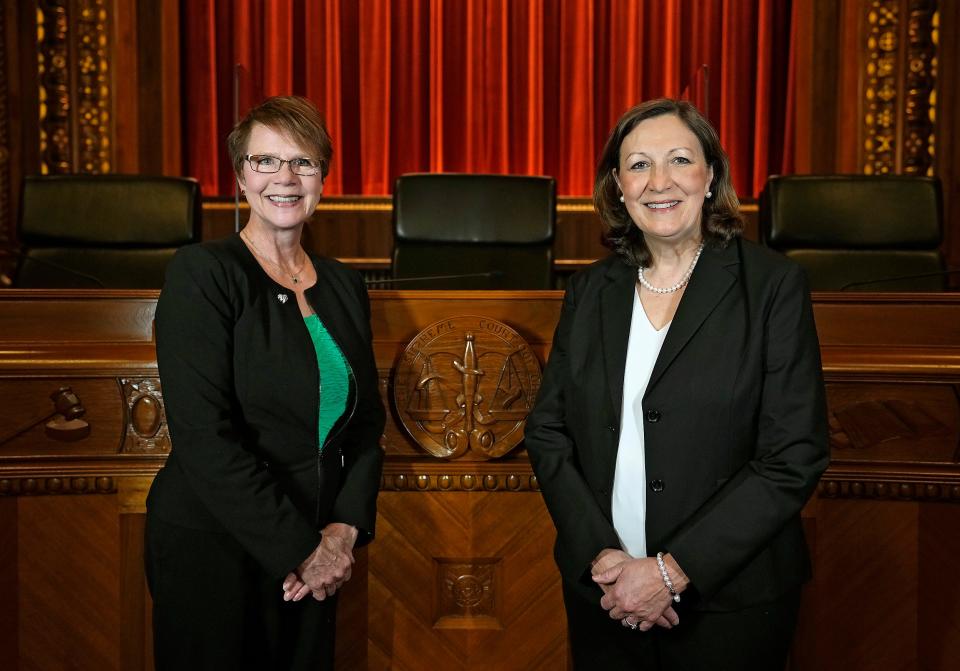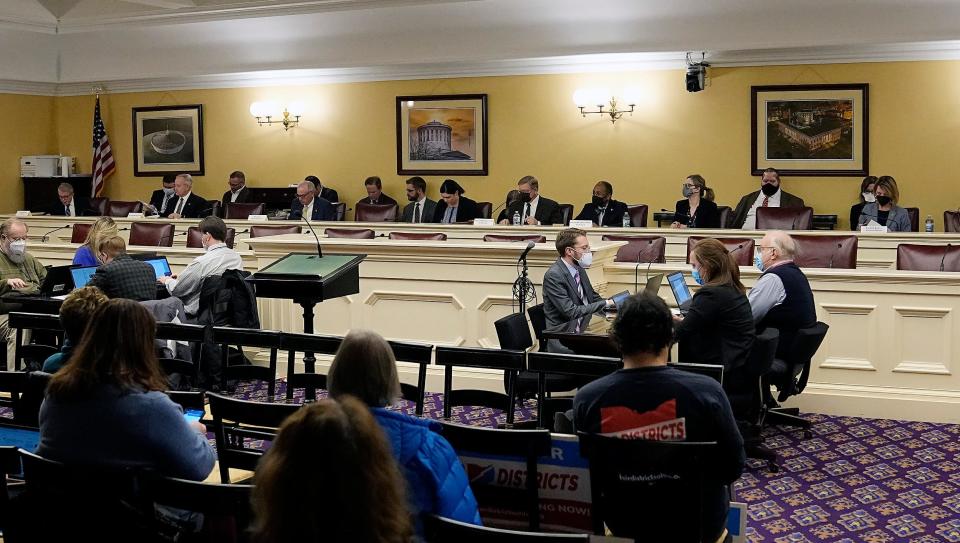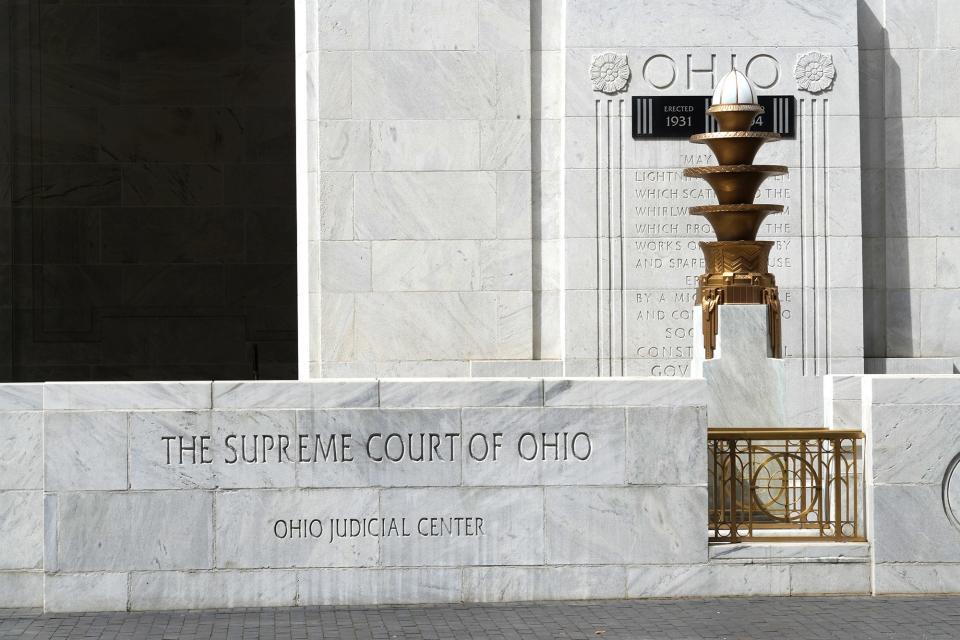Top Ohio House Republican leader: 4 Supreme Court justices should be 'benched'

The perils attendant to electing judicial activists to Ohio’s Supreme Court are amply demonstrated in the series of narrow 4-3 decisions invalidating the redistricting maps prescribed by the elected members of the Ohio Redistricting Commission.
More: Republican Party chair: If Ohio justice can not 'stomach' critics, she should leave job
These decisions have wreaked electoral chaos, and state district legislative lines are still too blurred to hold the primary for those races on the May 3 date the Legislature originally established.
But the greater casualty of this judicial usurpation is Ohio’s Constitution itself.
More: Our View: While your groceries go up, DeWine, LaRose, Huffman, Cupp waste millions to keep power

Chief Justice Maureen O'Connor's initial opinion in the state map cases foretold the Court’s direction in its subsequent decisions to replace what the Constitution actually says about redistricting with what that narrow judicial majority thinks it ought to say.
Her first opinion waxed eloquent about other methods of redistricting that Ohio voters could have adopted, instead of the one they did adopt.
She wrote nary a word about any defects in the map first presented by the Ohio Redistricting Commission, but suggested other methods of map-drawing that she found preferable to what was actually in the Ohio Constitution.
More: Our view: Maureen O’Connor pulled a Liz Cheney and now 'wicked' lawmakers coming for her
What these judges could not attain at the ballot box, they were determined to impose by judicial fiat.
The Ohio Constitution addresses redistricting at Article 11 Sections 1-10.
That language requires that the commission “shall attempt” to draw districts reflecting the political preferences of Ohioans over the preceding 10 years, but the “attempt” language applies only after the Commission complies with a series of mandatory requirements including that districts be compact, of relatively equal population, and through avoiding constitutionally proscribed splits of county, city, and township boundary lines.
More: Ohio Republicans discussing impeachment of Chief Justice Maureen O'Connor after map ruling

Though all parties agreed that the mandatory provisions were scrupulously followed in map one, the politically oriented Supreme Court majority nonetheless converted the aspirational “shall attempt” language into a mandate to draw maps reflecting the 10 year political preference data.
More: Ohio Supreme Court redistricting decision: Read Chief Justice Maureen O'Connor's opinion
To say that the Cincinnati Reds “shall attempt” to win the World Series is a far cry from a mandate that they do so—but that’s equivalent to what the 4-3 majority did. En route to that decision, the high court ignored the actual language in the Constitution, and, in the finest liberal tradition, looked outside that language to some of the political rhetoric used by proponents of the new language during the campaign seeking voter approval of it.
Error number one.
More: Politicians trying to take down Maureen O'Connor should think twice | Jack D’Aurora
As the commission derived maps two and three, they produced new maps that in fact did closely approximate Ohio voters’ political preferences over the last 10 years.
The allocation between districts favoring Republicans and those favoring Democrats of State House seats (54-45) and Senate seats (18-15) paralleled the 54-46 percent margin by which Ohio voters statewide had preferred Republicans in recent years.
But the 4-3 court majority struck those down, too, primarily because the seats in which the Democrats would have an advantage were not as safely Democratic as were the seats in which Republicans would have an advantage.

However, the Constitution nowhere prescribes that maps must be drawn with an equal number of “safe” seats, much less does it define how “safe” is “safe."
Must Democrats be preferred by 1 percent, 2 percent, 5 percent, or 10 percent in order to be deemed “safe?"
Show me where the Constitution requires that.
It doesn’t.
But O’Connor and company once again ignored the Constitution in ordering the commission to keep drawing maps that guaranteed more safe seats for Democrats, without ever telling us the percentage point at which “safe” is to be measured.

Errors two and three.
Next, O’Connor issued an order that the redistricting commissioners personally attend a hearing to explain why they should not be held in contempt of court. She did this unilaterally, without consulting any of her six colleagues on the court.
As Justice Sharon Kennedy pointed out in her dissent, O’Connor’s order was a blatant violation of her constitutional authority as chief justice. Error number four.
In its decision on map three, the activist court majority committed errors five and six.
It told the Commission it “should” hire “independent” mapmakers to assist in drawing the maps desired by the court. The Ohio Constitution nowhere requires the Commission to do so, but the Commission did anyway (at considerable public expense), hiring out of state professors whose efforts—never completed—merely slowed the process down further.

The court also told the commission it “should” draw each line of all 99 House and 33 Senate districts as a group in public view—yet another mandate that finds no support in the Ohio Constitution itself, and one that was utterly impractical.
But hey, once the court’s liberals can set aside the Constitution en route to achieving O’Connor’s preferred method of redistricting, why not keep making it up as they go along?
More: Opinion: Don't buy what J.D. Vance is selling
Any baseball team that committed six errors in one game would be benched.
Justices O’Connor, Brunner, Stewart, and Donnelly are at six already—and the game’s not even over.
State Rep. Bill Seitz is a Green Township, Hamilton County resident and Majority Floor Leader of the Ohio House of Representatives.
This article originally appeared on The Columbus Dispatch: Bill Seitz: Supreme Court Justices 6 errors violating Ohio Constitution

